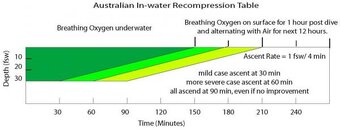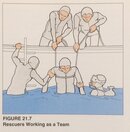CuzzA
Wetwork for Hire
My Rescue Diver manual says you really don't want to stick someone in the water. It takes too long and the victim will probably develop hypothermia before he gets relief.
Here's how the Aussies do it. I think there's too many variable and too many what ifs for a author to make a blanket statement like that. I also understand IWR is frowned upon (for obvious reasons) so it's also to be expected.
One would have to assume the victim is already wearing the proper exposure protection for the environment, right? I'd rather be a little cold from an extended dive than cold and dead.







